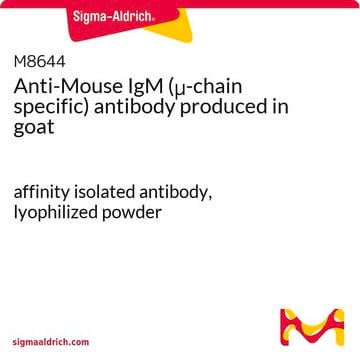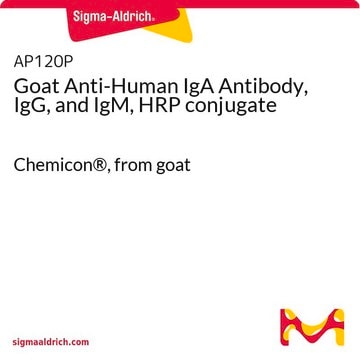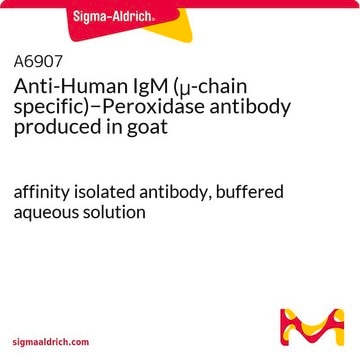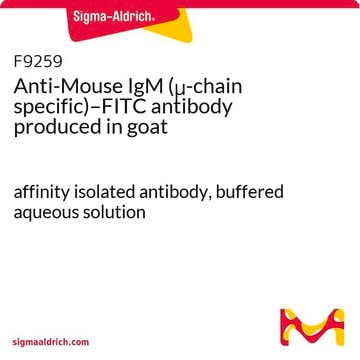AP128P
Goat Anti-Mouse IgM Antibody, µ chain, HRP conjugate
0.8-1.0 mg/mL, Chemicon®
Synonym(s):
Anti-Mouse IgM, Goat anti-Mouse IgM
About This Item
Recommended Products
biological source
goat
Quality Level
conjugate
peroxidase conjugate
antibody form
affinity purified immunoglobulin
antibody product type
secondary antibodies
clone
polyclonal
species reactivity
mouse
manufacturer/tradename
Chemicon®
concentration
0.8-1.0 mg/mL
technique(s)
ELISA: suitable
western blot: suitable
shipped in
wet ice
target post-translational modification
unmodified
Related Categories
General description
Class specific anti immunoglobulin antibodies are useful for: The characterization of malignant B cell proliferations. All but acute lymphocytic leukemias share either surface or intra cytoplasmic Ig with an isotypic restriction, which suggest the monoclonal nature of the cell population. Most of the chronic lymphocytic leukemias, non Hodgkin lymphomas and Burkitt′s lymphoma bear surface IgM, whereas plasmocytes from Waldenström′s disease bear intracytoplasmic IgM. The other isotypes are less frequently found. On the other hand multiple myelomas are usually of the IgG or IgA type.
Specificity
Application
Secondary & Control Antibodies
Fragment Specific Secondary Antibodies
Physical form
Storage and Stability
Legal Information
Disclaimer
Not finding the right product?
Try our Product Selector Tool.
Storage Class Code
11 - Combustible Solids
WGK
WGK 3
Certificates of Analysis (COA)
Search for Certificates of Analysis (COA) by entering the products Lot/Batch Number. Lot and Batch Numbers can be found on a product’s label following the words ‘Lot’ or ‘Batch’.
Already Own This Product?
Find documentation for the products that you have recently purchased in the Document Library.
Customers Also Viewed
Our team of scientists has experience in all areas of research including Life Science, Material Science, Chemical Synthesis, Chromatography, Analytical and many others.
Contact Technical Service
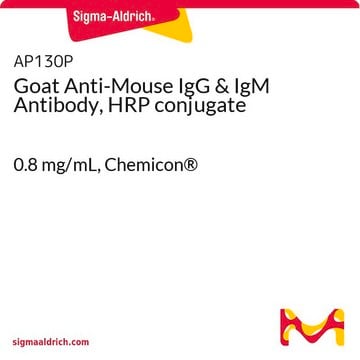
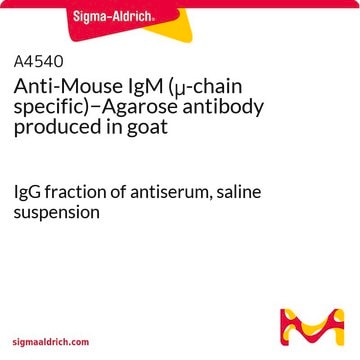
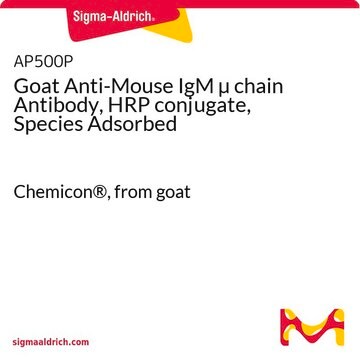

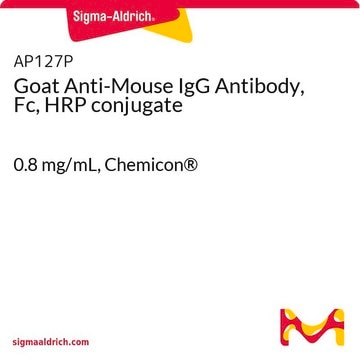


![1-{4-[1,2-Diphenyl-2-(p-tolyl)vinyl]phenyl}-1H-pyrrole-2,5-dione](/deepweb/assets/sigmaaldrich/product/structures/269/472/ef436ac0-43aa-4b6e-8061-79bd246ff466/640/ef436ac0-43aa-4b6e-8061-79bd246ff466.png)
